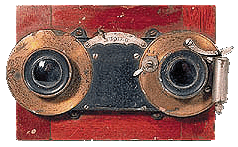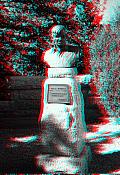|
|
||
Exploring methods of three-dimensional documentation (1)
Stereo pairs are either made by a set of two cameras (or one camera with two lenses), or by making two pictures with one camera: after the first shot, the camera is shifted horizontally, then the second picture is made. This last method only functions, of course, when the scene does not move. Since art works stand still, the method can be applied for making stereo pairs of sculptures. To enjoy the stereographic effect of such image pairs, we have to make sure the left and the right eye only see "their" image.
|
||
|
|
|
|||||||||||
 One
method to record the spatial appearance of a scene or object is nearly as old as
photography itself: already in the age of daguerrotypy, pairs of stereo images
were made. This method is based on the principle of human perception: when we
look at an object, each eye perceives it from a slighty different perspective.
In our brain, the two different images are fused; the spatial characteristics of
the scene are reconstructed from the difference between the left and the right
picture.
One
method to record the spatial appearance of a scene or object is nearly as old as
photography itself: already in the age of daguerrotypy, pairs of stereo images
were made. This method is based on the principle of human perception: when we
look at an object, each eye perceives it from a slighty different perspective.
In our brain, the two different images are fused; the spatial characteristics of
the scene are reconstructed from the difference between the left and the right
picture.